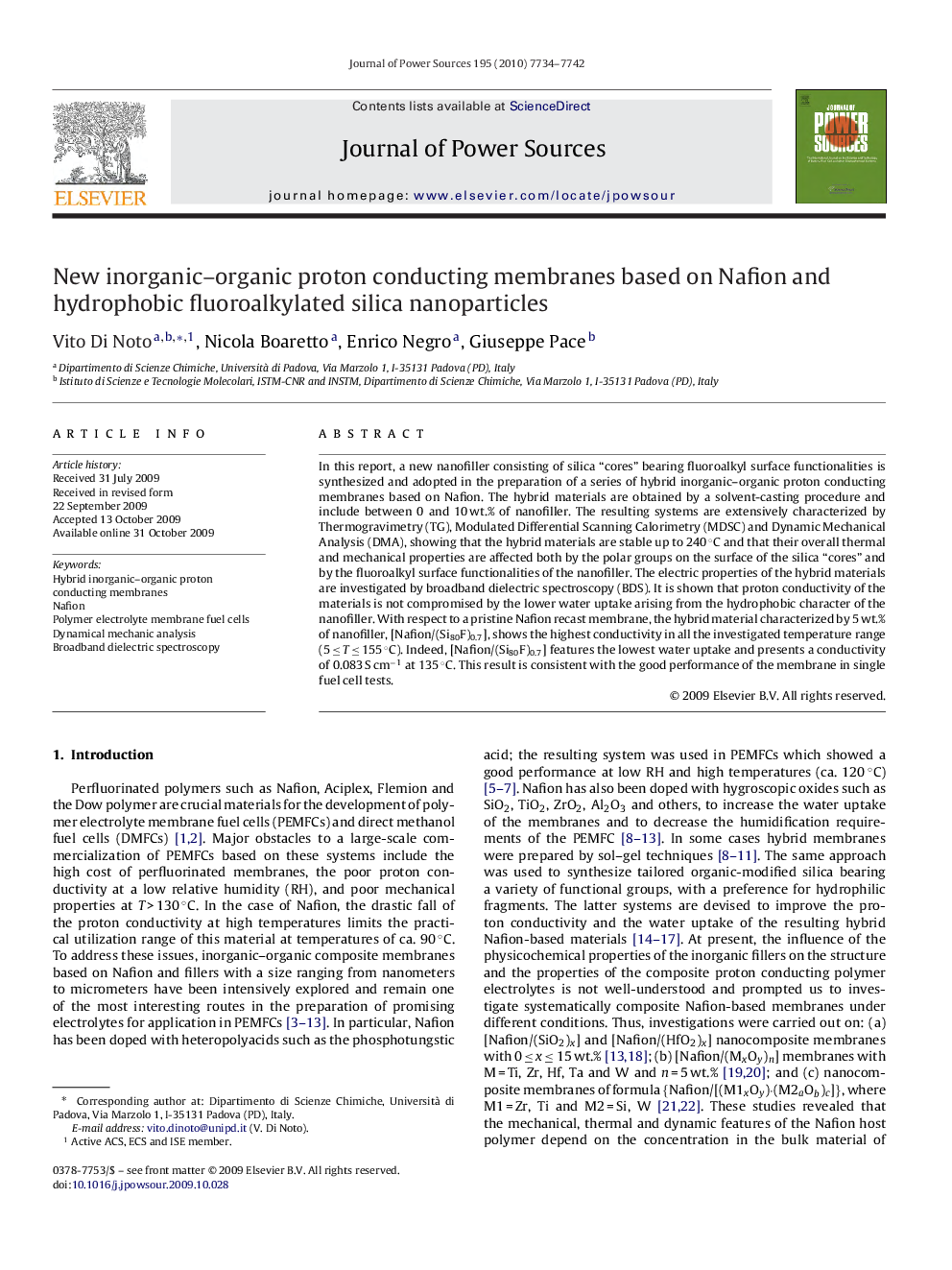| Article ID | Journal | Published Year | Pages | File Type |
|---|---|---|---|---|
| 1289785 | Journal of Power Sources | 2010 | 9 Pages |
In this report, a new nanofiller consisting of silica “cores” bearing fluoroalkyl surface functionalities is synthesized and adopted in the preparation of a series of hybrid inorganic–organic proton conducting membranes based on Nafion. The hybrid materials are obtained by a solvent-casting procedure and include between 0 and 10 wt.% of nanofiller. The resulting systems are extensively characterized by Thermogravimetry (TG), Modulated Differential Scanning Calorimetry (MDSC) and Dynamic Mechanical Analysis (DMA), showing that the hybrid materials are stable up to 240 °C and that their overall thermal and mechanical properties are affected both by the polar groups on the surface of the silica “cores” and by the fluoroalkyl surface functionalities of the nanofiller. The electric properties of the hybrid materials are investigated by broadband dielectric spectroscopy (BDS). It is shown that proton conductivity of the materials is not compromised by the lower water uptake arising from the hydrophobic character of the nanofiller. With respect to a pristine Nafion recast membrane, the hybrid material characterized by 5 wt.% of nanofiller, [Nafion/(Si80F)0.7], shows the highest conductivity in all the investigated temperature range (5 ≤ T ≤ 155 °C). Indeed, [Nafion/(Si80F)0.7] features the lowest water uptake and presents a conductivity of 0.083 S cm−1 at 135 °C. This result is consistent with the good performance of the membrane in single fuel cell tests.
